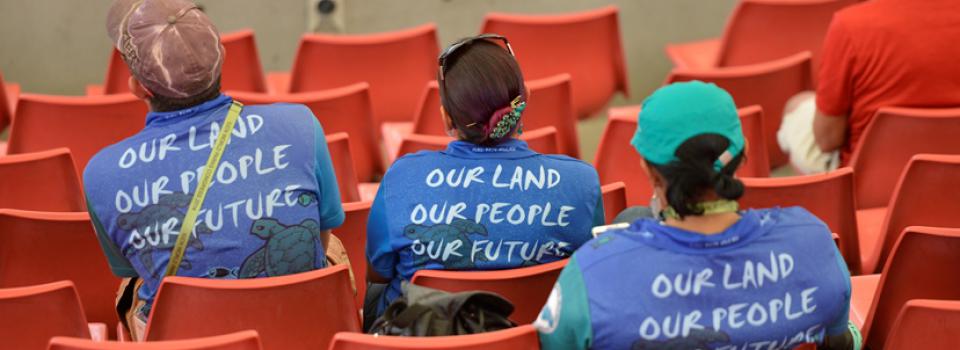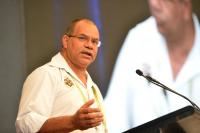The Great Barrier Reef: where western and traditional knowledge meet
News from the Great Barrier Reef Marine Park Authority.
Combining Indigenous knowledge with western-style management can boost the effectiveness of protected areas, international delegates at the IUCN World Parks Congress in Sydney heard today.
Great Barrier Reef Marine Park Authority Indigenous partnerships director Liz Wren said the expertise of Traditional Owners had strengthened day-to-day, on-ground management of the Marine Park.
“Traditional Owners know their sea country better than anyone, and that’s why their involvement in managing this vast expanse is so important,” Ms Wren said.
“More than 70 Aboriginal and Torres Strait Islander Traditional Owner clan groups have customary estates that include land and sea country within the Great Barrier Reef. These connections go back tens of thousands of years, and extend as far offshore as the outer barrier reefs.
“Traditional Owners not only play an intrinsic role in protecting the park’s rich biodiversity, but have shown a strong desire to work in collaboration with the Marine Park Authority.”
Ms Wren said the agency placed a strong emphasis on partnership arrangements with Traditional Owners to ensure their direct participation.
“Each day, Traditional Owners and Indigenous rangers apply their skills to thousands of square kilometres of the Marine Park, whether it be researching and monitoring vulnerable and threatened species, spotting and reporting illegal activity, rehabilitating riparian vegetation or protecting cultural heritage sites,” she said.
“Importantly, they are using their traditional knowledge to inform on-ground management practices.”
The congress also heard substantial outcomes had been achieved through the partnerships, both for the Marine Park and for Traditional Owners.
Examples have included greater monitoring of vulnerable species such as dugong, successful prosecution of offenders based on Indigenous rangers’ evidence and statements, as well as increased government acknowledgement of traditional customs and cultural authority, and the creation of career pathways through recognised training.
Ms Wren said a series of Traditional Use of Marine Resources Agreements had proven successful in formalising the direct engagement of Traditional Owners.
“These agreements, developed by Traditional Owner groups and accredited by the Australian and Queensland governments, describe how groups will manage their traditional use activities in their sea country,” she said.
“The agreements vary from group to group, but they can incorporate specific strategies to conserve key habitats and species, such as turtles and dugongs, along with activities to restore and maintain waterways and coastal ecosystems, and protect cultural heritage sites.
“In some areas, such as the Girringun region north of Townsville and Port Curtis Coral Coast near Gladstone in the south of the Reef, these agreements have been incorporated into and implemented on-country through Commonwealth-funded Indigenous ranger programs.
“We first used these agreements in 2005, and we now have eight in place, including an Indigenous Land Use Agreement, covering 16 Traditional Owner clan groups and nearly 25 per cent of the Great Barrier Reef Marine Park coastline.
“This amounts to more than 45,000 square kilometres of sea country being managed in partnership with the Marine Park Authority. Those figures will only continue to grow, as other Traditional Owner groups have expressed a strong desire to develop similar agreements.”
Ms Wren said leading scientific institutions had also benefited from the partnerships with Traditional Owners, enabling them to gain an improved understanding of traditional ecological knowledge.
“For example, the Lama Lama Traditional Owners in far north Queensland are working with James Cook University as part of its research into inshore dolphins, including the rare snubfin dolphin,” she said.








